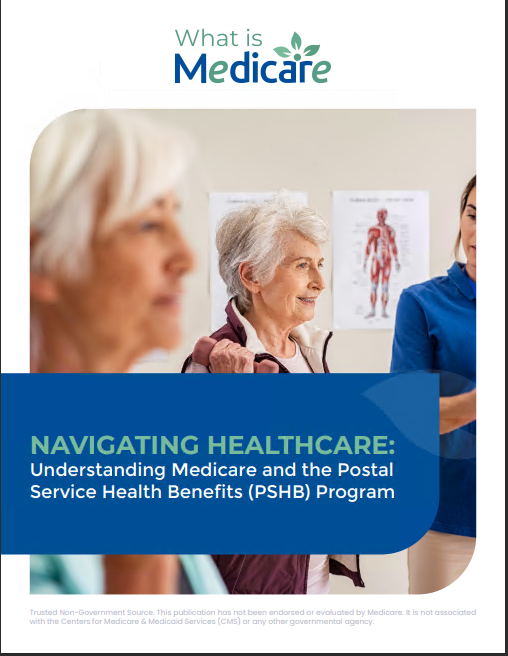Key Takeaways
-
Turning 65 means it’s time to take action on Medicare—not just wait for something to show up in your mailbox.
-
You have multiple enrollment windows and coverage choices, but missing deadlines could cost you both time and money.
That Magical Age: 65
You’ve probably been hearing about Medicare since your early 60s—through ads, postcards, and maybe even friends who’ve already enrolled. Now it’s your turn. Turning 65 in 2025 means you’re officially eligible for Medicare, and there are a few things you need to get on top of—fast.
Medicare isn’t just one thing. It’s a mix of parts, enrollment periods, optional choices, and (yes) potential penalties. So instead of hoping it magically works itself out, let’s walk through what you actually need to do.
When Should You Start Thinking About Medicare?
You can start thinking about Medicare as early as three months before your 65th birthday. This kicks off what’s called your Initial Enrollment Period (IEP). It lasts for seven months total:
-
3 months before your birthday month
-
The month you turn 65
-
3 months after your birthday month
That’s your ideal window to enroll. Miss it, and things get more complicated.
What Are the Parts of Medicare?
Here’s where it gets a little alphabet-soupy. Medicare is divided into four main parts:
Part A – Hospital Insurance
-
Covers inpatient hospital stays, skilled nursing facility care, hospice, and some home health care.
-
Most people don’t pay a monthly premium for Part A if they’ve worked 10 years or more.
Part B – Medical Insurance
-
Covers doctor visits, outpatient care, preventive services, and durable medical equipment.
-
You’ll pay a monthly premium for Part B, which in 2025 is $185.
Part C – Medicare Advantage (Offered through private companies)
-
These are bundled alternatives to Original Medicare.
-
You still must enroll in Part A and B first.
-
Offered by private providers, which we won’t get into here.
Part D – Prescription Drug Coverage
-
Helps cover the cost of your medications.
-
Premiums and coverage vary, but there’s a deductible of up to $590 in 2025.
What If You’re Still Working at 65?
This is a big one. If you or your spouse are still working and covered by a group health plan, you might be able to delay Parts B and D without penalties.
Here’s how it usually breaks down:
-
If the employer has 20 or more employees, Medicare becomes secondary.
-
If the employer has fewer than 20 employees, Medicare becomes your primary coverage, and you may need to enroll.
Always check with your HR department about how your current coverage works with Medicare.
What If You Miss Your Initial Enrollment Period?
Missed your IEP? Don’t panic, but act quickly. You may qualify for a Special Enrollment Period (SEP) if you delayed because of employer coverage.
If not, you’ll have to wait for the General Enrollment Period (GEP) from January 1 to March 31, with coverage starting July 1. You may also face late penalties, especially for Part B and Part D.
Understanding Late Penalties
Late enrollment comes with consequences:
-
Part B: 10% added to your monthly premium for every 12-month period you were eligible but didn’t sign up.
-
Part D: 1% added to your monthly premium for each month you delay, unless you had other credible drug coverage.
These penalties can follow you for life, so enroll on time if you can.
Deciding Between Original Medicare and Medicare Advantage
Let’s talk structure. Once you enroll in Part A and B, you can choose:
-
Original Medicare: The traditional government program. You can add a Part D plan and possibly a supplemental insurance policy.
-
Medicare Advantage: A bundled option that includes Part A, B, and usually D, offered through private plans (again, we’re not naming names).
Your decision depends on your lifestyle, medical needs, travel habits, and preferred doctors.
Don’t Forget About Medigap (If You’re Going with Original Medicare)
If you stick with Original Medicare, you can buy supplemental insurance (Medigap) to help with costs like copays, coinsurance, and deductibles.
Medigap enrollment is easiest during the 6-month Medigap Open Enrollment Period starting the month you turn 65 and are enrolled in Part B. After that, insurers can charge more or deny coverage.
Medicare and Prescription Drugs: What You Need to Know
Even if you’re healthy now, skipping drug coverage can cost you later. If you go with Original Medicare, you’ll need to enroll in a standalone Part D plan. If you’re in Medicare Advantage, drug coverage is usually included.
Be aware:
-
The Part D deductible is capped at $590 in 2025.
-
Once you hit $2,000 in out-of-pocket costs, you won’t pay anything more for the rest of the year. This is a major change for 2025, thanks to the new cap.
Medicare and Medicaid Aren’t the Same
Just to clear this up:
-
Medicare is federal health insurance for people 65 and older, or younger with certain disabilities.
-
Medicaid is a state and federal program for people with limited income and resources.
Some people qualify for both, which is called dual eligibility. But they’re separate programs.
How to Actually Enroll
You don’t get Medicare automatically unless you’re already receiving Social Security. Here’s how to do it:
-
Online: Visit the Social Security website.
-
By phone: Call Social Security.
-
In person: Make an appointment at your local Social Security office.
The process takes about 10-15 minutes if everything’s in order.
Be Strategic: Medicare Isn’t “Set and Forget”
Once you’re in, don’t just forget about it. Every year, from October 15 to December 7, you can review and change your plan during Open Enrollment. This is your chance to:
-
Switch between Original Medicare and Medicare Advantage
-
Change or join a Part D plan
-
Update based on changes to your health or coverage needs
Plans and premiums can change yearly, so stay on top of your options.
Making Sense of the Timeline
Here’s a quick recap of the most important dates:
-
3 months before turning 65: Start your Initial Enrollment Period
-
Your birthday month: Enroll if you haven’t already
-
3 months after: Last chance to enroll in IEP without penalty
-
January 1 to March 31: General Enrollment Period (if you missed IEP)
-
October 15 to December 7: Medicare Open Enrollment each year
Let’s Talk About Costs
Even though Medicare is a government program, it’s not free. Here’s what to expect in 2025:
-
Part A: Usually free if you worked 40 quarters
-
Part B: $185 monthly premium
-
Part D: Varies, but the deductible can be up to $590
-
Medigap or Advantage plans: Additional cost, depending on the coverage you choose
Don’t forget potential late penalties if you miss your deadlines. Planning ahead helps avoid surprises.
Medicare Isn’t One-Size-Fits-All—So Personalize It
There’s no single right way to “do” Medicare. What works for your neighbor may not be right for you. You’ll want to think about:
-
Whether you travel often or stay local
-
If you prefer certain doctors or hospitals
-
What medications you take regularly
-
How much risk you’re willing to accept with out-of-pocket costs
Use that info to tailor your Medicare setup to your life—not the other way around.
Ready to Take the Next Step?
Now that you know the pieces, the timelines, and the potential pitfalls, it’s time to get organized. Medicare isn’t hard if you approach it with the right info and a plan.
If you’re still unsure about your options, get in touch with a licensed agent listed on this website. They can walk you through your choices and help you avoid costly mistakes.










